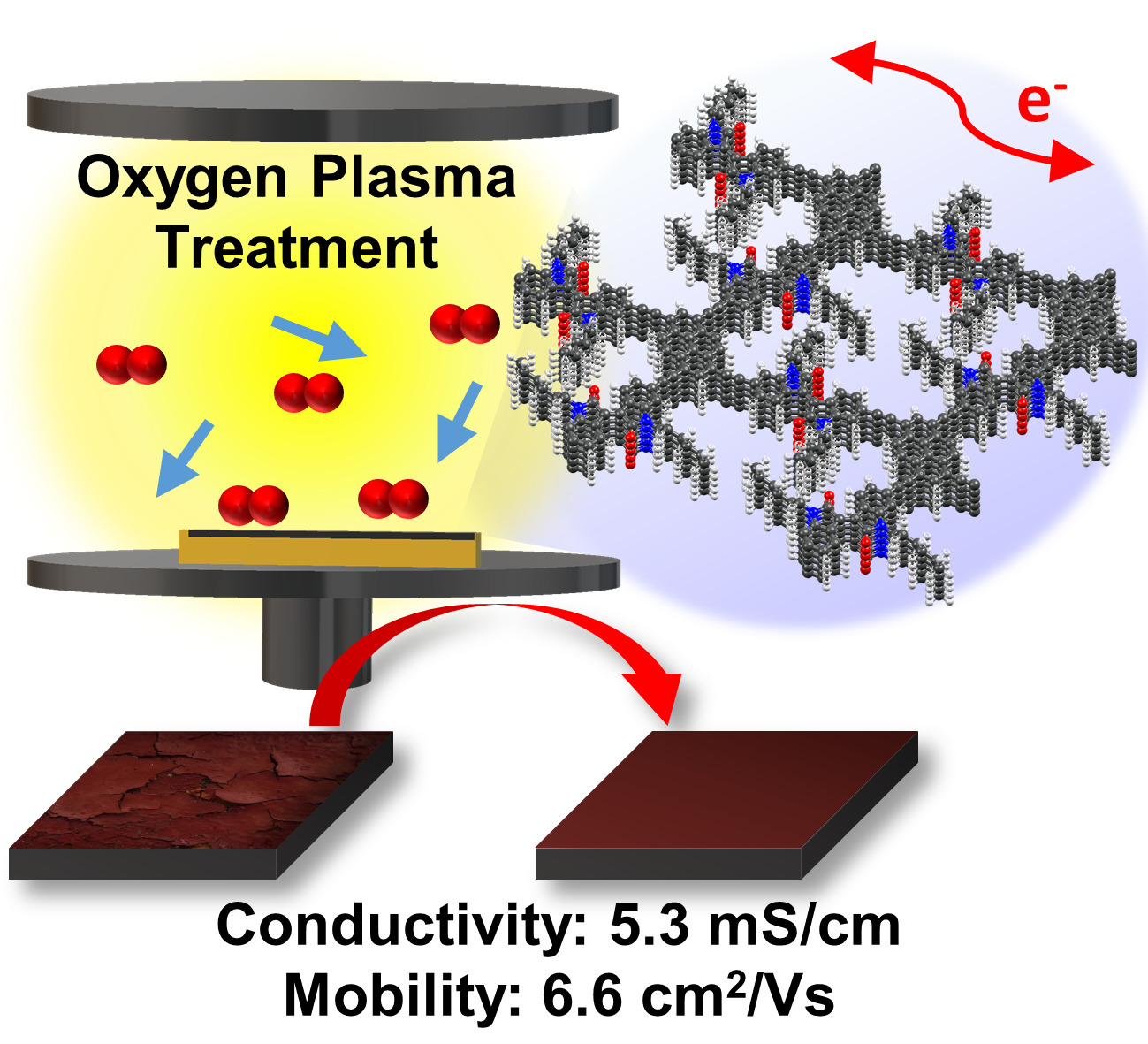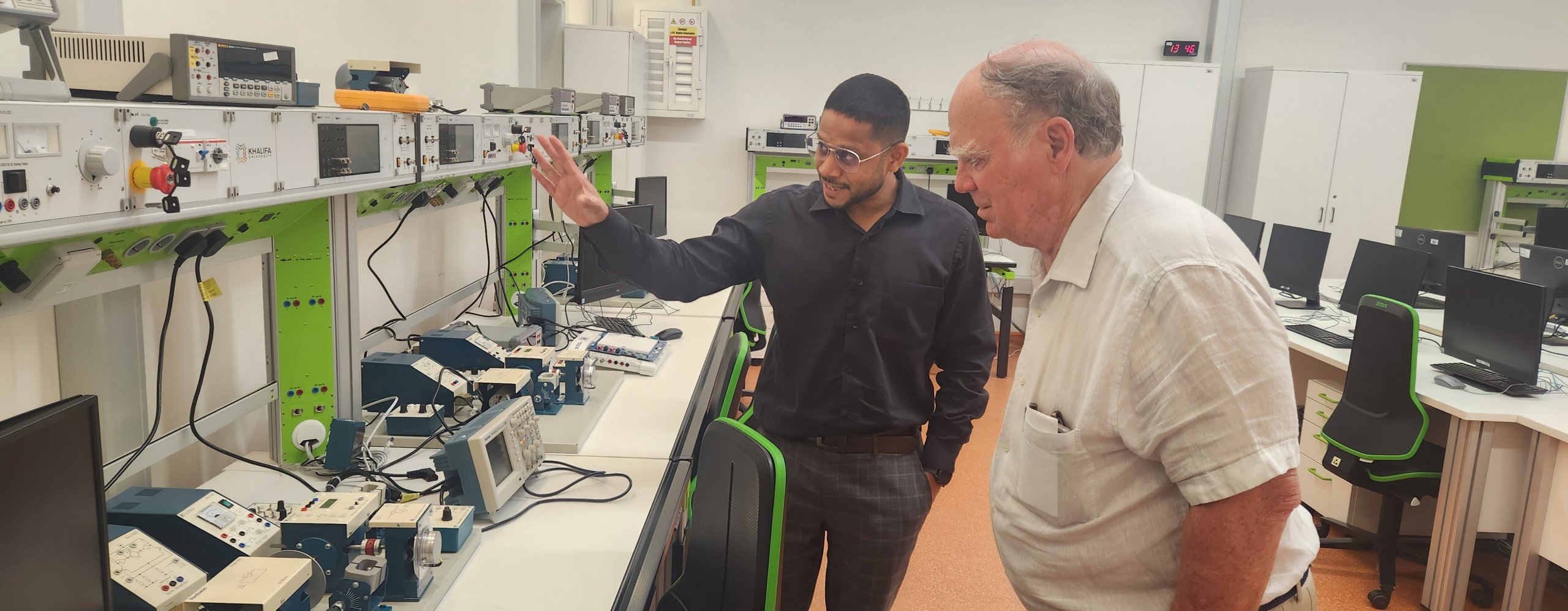
New research pushes organic semiconducting materials into new territories, paving the path to advanced conductive n-type organic semiconductors.
A team of researchers from Khalifa University, in collaboration with researchers from New York University Abu Dhabi, University of Nova Gorica, University of Maribor, American University of Beirut and Instituto de Ciencia de Materiales de Madrid, has developed a new type of semiconductor for use in organic optoelectronic devices. Their results are a significant advancement in materials science and have been published in Advanced Science, a top 1% journal in material science and applications.
The Khalifa University team members included Dr. Kayaramkodath Chandran Ranjeesh, Safa Gaber, Dr. Gisha Elizabeth Luckachan and Dr. Dinesh Shetty, all Department of Chemistry, and Ayman Rezk and Dr. Ammar Nayfeh, Department of Electrical Engineering and Computer Science.
Electron transport is the fundamental backbone of the intricate world of semiconductors. These semiconductors play a pivotal role in contemporary electronics, serving as key components in solar cells, and thermoelectric generators. Traditional silicon-based electronics have dominated the industry, but organic semiconductors are making waves. They have unique attributes such as low-temperature processability, weight advantage, cost-effectiveness, high flexibility, structural tunability, and a rich diversity in potential applications. In this work, the team developed an n-type semiconducting conjugated microporous polymer (CMP), incorporating an Isoindigo (II) acceptor unit, a well-known molecule used in organic photovoltaics. They achieved the desired donor and acceptor combination by varying the donor units and their subsequent combinations.
The electron-rich donor component linking with an electron-deficient acceptor unit is a key design approach in developing these organic semiconducting materials. However, most of the current organic semiconductors are p-type.
“For the holistic advance of the field, n-type organic semiconductors are needed. Since their development is challenging, this research area remains relatively unexplored,” Dr. Shetty said.
Still, with the rise in organic electronics, enhancing both p-type and n-type organic semiconductors becomes imperative. Enter conjugated microporous polymers (CMPs), which have garnered attention for their promising attributes. These 2D-materials offer variable conjugation strength and micro-porous structures, promising a vast application potential.
One of the main challenges in organic polymers application lies in optimized fabrication techniques. The team developed a plasma-assisted technique which bypasses existing organic materials fabrication limitations.
“The introduction of a plasma-assisted fabrication method aids in producing consistent, thin organic polymer films essential for mobility measurements,” Dr. Shetty said. “The optimized combination between II and pyrene units showed impressive conductivity and high electron mobility compared to other tested combinations at ambient conditions, surpassing previously known CMPs. The II unit was specifically chosen for its renowned properties, which include low-lying molecular energy levels and solubility upon N-alkylation, which is essential for both synthesis and fabrication of the materials.”
By understanding the intrinsic donor-acceptor interactions and integrating them with calculated models and observed transport properties, research is inching closer to pushing organic semiconducting materials into new territories. This CMP design with appropriate donor–acceptor pairs could propel charge mobility and conductivity in n-type organic semiconductors. This research could also well pave the path to advanced conductive n-type organic semiconductors, ushering in a new era of cutting-edge electronic devices.
Jade Sterling
Science Writer
20 October 2023






